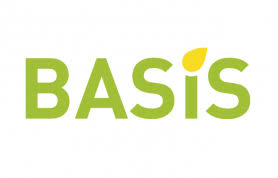
|
|
|
|
|
In the May edition
- The ever-present threat of sclerotinia
- Register now for our £200 OSR Offer
- Inatreq - time to rethink T2 rates?
- 2023 Inatreq Stewardship Support Offer
- Getting your potato herbicide and fungicide programmes right for 2023
- Apply BlueN to your potato crop
- Weed control in your cereal crops
- Learn and earn CPD points with Corteva
- Technical hotline contact details
|
|
|
|
|
|
|
|
The ever-present threat of sclerotinia
At the time of writing, 2023 is shaping up to be a year where disease will be seen. The AHDB’s sclerotinia forecasting tool shows a high risk in Devon and Cornwall, with warnings for much of the west coast of England. “The risk of infection can be in the soil from previous crops, and the pathogen can last up to eight years,” explains Andy Stainthorpe from Corteva Agriscience’s seed brand, Pioneer.
“Like most diseases, sclerotinia likes wet and warm conditions, and when the crop is in early to mid-flower, the petals can fall from the plant and stick to the stem which creates the perfect storm for infection. Examples of infected crops can be extremely localised, usually indicated by a dying plant with an infected stem, leading to early senescence which obviously affects yield.”
Andy says spray programmes to protect crops are common, but that thanks to advanced genetic breeding, in-built tolerance now exists to put growers on the front foot. PT303 Protector Sclerotinia topped the AHDB’s UK Recommended List for 2021-22 with a gross output of 107%, and showed its consistency in this year’s List returning 104%. Read the full press release here.
In the Farmers Weekly article 'How grower adds flexibility with disease-tolerant OSR' they look at how "changing weather patterns and the opportunity to reduce fungicide spray inputs were behind Lincolnshire grower Nick Wright’s decision to grow the sclerotinia-tolerant winter oilseed rape variety PT303.
Having once experienced the devastation that sclerotinia infection can cause in an oilseed rape crop, Mr Wright is keen to keep crops free of the stem disease, but he is also aware of the crop damage that flowering sprays can cause." Read the full article here.
|

|
|
|
|
|
|
Register now for our £200 OSR Offer
We are once again running our OSR Offer to help you maximise the potential of your oilseed rape crop. This year, we will be offering £200 cashback to anyone that purchases Protector® Sclerotinia tolerant hybrid, PT303 and Belkar® herbicide for the 2023/24 growing season. Anyone taking part in the offer will be eligible for a one-off payment of £200 if they make a purchase before 1st November 2023 and submit a claim form by 15th November 2023*.
Click here to find out more and register your interest.
*Terms and conditions apply.
|

|
|
|
Inatreq™ - time to rethink T2 rates?
When might a higher use rate of a cereal fungicide be appropriate?
When disease pressure is high
- Exacerbated by frequent rain as we are experiencing this year.
When greater curative activity is required
- When the T1 to T2 gap has become extended which often occurs in wet years.
When a longer persistency of control is required
- The longer it stays wet, the more disease cycles there will be and the longer the protection required.
When Winter Wheat is early drilled or susceptible
- In AHDB trials, drilling late September versus early October decreased the effective RL varietal septoria resistance rating by 0.6. e.g. Skyscraper moves from 4.9 to 4.3, Dawsum from 6.4 to 5.8, Extase from 7.8 to 7.2 and Skyfall from 5.4 to 4.8.
Since launch, the 1.25L/ha rate of Inatreq™ products has been considered the sweet spot with variation from 1.1L/ha to 1.5L/ha based on circumstances.
The 2023 season, to date, points to a potentially very high Septoria year and, with continuing unsettled weather, the T1 to T2 gap could become extended. So, looking at the rate flexibility of Inatreq products, might we be heading into a scenario where the 1.5L/ha rate is the more appropriate rate? Looking at the trial below from 2021 (high disease), if the T2 spray was delayed to GS45, increasing the rate of Inatreq from 1.25L/ha to 1.5L/ha not only maintained yields at the optimum level but also provided 0.15T/ha worth £30/ha compared to the 1.25L/ha rate of the same chemistry at the same timing.
|

|
|
|
2023 Inatreq Stewardship Support Offer of £200 now live
Before purchasing or using products containing Inatreq active, farmers and contractors have been asked to follow the best practice application advice provided by Corteva.
In recognition that changing sprayer parts does carry a cost, Corteva are offering a goodwill gesture of £200 towards the cost of sprayer parts purchased in conjunction with products containing Inatreq™ fungicide.
Click here to learn more about the offer and submit your claim. This offer is limited to the first 5,000 successful claims made before the closing date of 31 August 2023.
|
|
|

|
|
|
|
|
Getting your potato herbicide and fungicide programmes right for 2023
Potato planting continues well into May, with a frustrating stop/start pattern continuing. In many instances this will have inevitably resulted in a focus on getting the crop in, rather than applying pre-emergence herbicides. Indeed, the warming soils will mean a smaller window than usual for application. Post-emergence herbicide choices are very limited, with Titus® offering the most comprehensive range of broad-leaved weed and grass weed control.
Benefits of Titus:
- Titus may be applied to all varieties (not seed crops)
- Titus controls a range of both broad-leaved weeds and grasses
- Broad-leaved weed spectrum may be broadened by mixing with metribuzin 0.2-0.4kg/ha
|

|
Key * Weed control improved when the tank mixture of Titus 40g/ha + metribuzin 0.2kg/ha is used in preference to Titus alone.
|
The pressure of disease means fungicide programmes should also be a priority. Zorvec is unique in FRAG Group-49 active ingredients as it provides a very valuable alternative mode of action in the programme. Apply twice in rapid growth phase of the crop to benefit from the cleanest start available and use the unparalleled control conferred by Zorvec Endavia® in stable canopy to maintain crop canopies when blight pressure increases, particularly in crops destined for storage.
Benefits of Zorvec:
- Systemic - moves into new growth for cleanest possible start for your crop
- Curative - only offered by oxathiapiprolin, cymoxanil and propamocarb
- Persistence - greater than any other active ingredient available to growers
- Source of the Zorvec Bonus (find out more in the Potato Technical Update, Spring 2023)
- Enables use at 10 day intervals
- As rainfast as any product available to growers
|

|
Zorvec™ 2023 technical guide presented by Craig Chisholm, Field Technical Manager for Potatoes in the UK at Corteva Agriscience
|
|
|
Apply BlueN to your potato crop
With challenging weather conditions so far, the window for drilling and planting potatoes, sugar beet and maize has been extended. Consider applying BlueN™ to boost Nitrogen efficiency in these crops and improve yield potential.
BlueN contains a naturally occurring bacteria, Methylobacterium symbioticum, that will fix nitrogen from the atmosphere and convert it into ammonium fertilizer in the plant. Meta data analysis from key crops including potatoes has shown that application of BlueN has produced considerable yield benefits.
In 32 independent and Corteva potato trials in 2022, with a positive impact on the marketable fraction, there was an average yield response of 2.5t/ha yield in potatoes compared to base fertilizer regime. In over 80% of the trials the yield response was on average 3.3t/ha. Current pricing for potatoes is £190-£250/tonne depending on variety and quality, this increase in yield represents a significant benefit to the farmer. For best results apply BlueN when the potato crop is meeting in the rows, this usually corresponds to BBCH25-33 of the crop.
|

|

|
|
|
Weed control in your cereal crops
Now that the weather conditions have improved, growers face the challenge of a large backlog of on farm activities. Getting on top of broad-leaved weeds should however be the priority as there are reports of large, competitive broad-leaved weeds in many cereal crops currently.
In winter wheat crops where residual herbicides have now run out of steam, there are large cleavers, bindweed, fumitory and some creeping thistle present. Pixxaro® at 0.25L/ha is a cost-effective way of controlling these weeds, offering better control than 100grams AI of fluroxypyr. Where creeping thistle is present, growers may add a sulfonyl-urea herbicide such as metsulfuron-methyl to complete the weed spectrum.
|

|
Where residual herbicides have not been used, the weed burden is much greater and includes other difficult weeds such as brassicas, cranes-bill, poppy and groundsel. Zypar® offers a broader spectrum and sets the industry standard for control of the most competitive broad leaved weeds. With applications permitted up to and including GS45 (30th June) on winter and spring cereals (except oats), Zypar offers a flexible window of application to the grower, beyond that of the phenoxy and sulfonyl-urea herbicides. Use Zypar at a minimum of 0.75L/ha, consider higher rates if weeds have become large.
In Scotland, where spring barley crops have only just gone in, growers should make the most of the first opportunity to hit weeds hard, once they emerge. Cold conditions will have encouraged the germination of weeds such as the polygonum species, brassica weeds such as Charlock, and Fumitory, weeds which are not controlled by pre-emergence residual herbicides.
For robust control of difficult spring barley weeds such as fumitory use Pixxaro at 0.375L/ha. Activity against polygonum species may be boosted by tank-mixing with a sulfonyl-urea herbicide such as Harmony® M. Pixxaro may also be used to control ALS resistant chickweed, as it contains fluroxypyr.
|
Pixxaro weed spectrum
If you are having trouble viewing the weed spectrum, you can also view it here in the Pixxaro Tech Sheet.
|

|
Key: bold–label weeds, , * –improved control with adjuvant, S susceptible, MS –moderately susceptible, T –tolerant, TL –true leaves, ‘-’ no information. Any recommendation for off-label control is only indicative and should not be considered a recommendation for use on the part of Corteva Agriscience. The user assumes full responsibility for use on these weeds.
|
|
|
Learn and earn CPD points with Corteva
With the time to submit your CPD BASIS points fast approaching, we've collated all the ways you can earn CPD points via content from Corteva. From online courses to subscribing to our newsletters, there are many options available. Find out more by clicking here or visiting www.corteva.co.uk/cpd.
|

|
|
|
|
|
|
Want to hear more from us?
Update your preferences and tailor your choices to make sure you receive the communications that are right for you. Don't forget to enter into our monthly prize draw by ticking the box before submitting to be in with the chance to win.
|

|
|
|

|
|
|
|
|
|

|
Subscribing to Corteva Agriscience Arable Update gives eligibility for 2 Crop Protection BASIS points annually. Sign up to this e-newsletter to receive BASIS points.
|
|
|
|
|
|
|
|
USE PLANT PROTECTION PRODUCTS SAFELY. Always read the label and product information before use. For further information including warning phrases and symbols refer to label. Corteva Agriscience UK Limited, CPC2 Capital Park, Fulbourn, Cambridge CB21 5XE. Tel: 01462 457272. ®, ™ Trademarks of Corteva Agriscience and its affiliated companies. All other brand names are trademarks of other manufacturers for which proprietary rights may exist. All manufacturers tradenames and trademarks are duly acknowledged. Inatreq™ active contains fenpicoxamid. BlueN contains Methylobacterium symbioticum. Zypar® contains Arylex active and florasulam. Univoq™ contains fenpicoxamid and prothioconazole. Titus® contains rimsulfuron. Zorvec Endavia® contains benthiavalicarb and oxathiapiprolin. Pixxaro® EC contains ArylexTM active (halauxifen-methyl) and fluroxypyr.
|
|
|
|
|